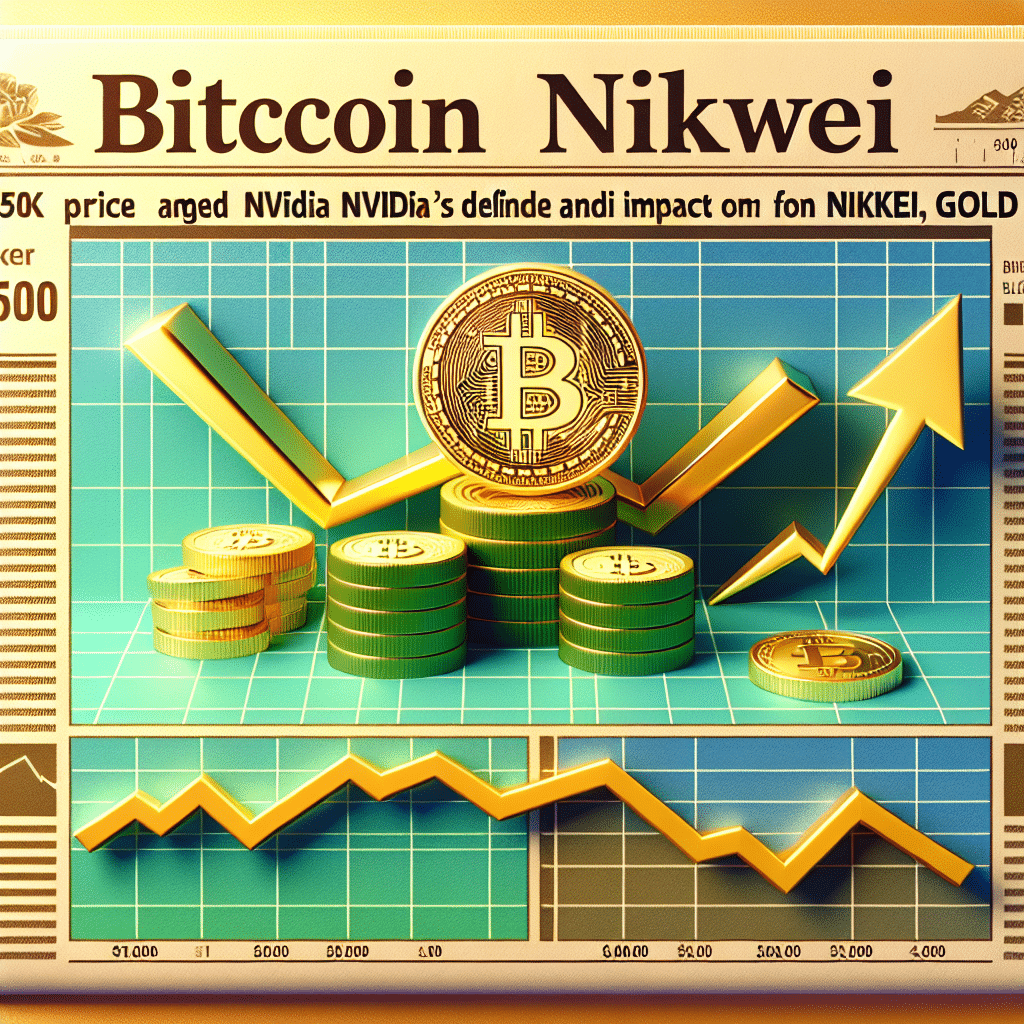Table of Contents
Analyzing Bitcoin’s Response to External Market Forces
The cryptocurrency market, notoriously known for its volatility, has once again found itself reacting sharply to global economic signals and technological stock performances, particularly from the United States. Recent data shows Bitcoin (BTC) nudging towards its monthly lows as of September 4, influenced largely by a tech stock rout, highlighting the sensitivity of digital assets to traditional market movements.
Nvidia’s Troubles and Their Ripple Effect on Bitcoin
The Direct Impact on Bitcoin Price
Recent downtrends in the BTC market have traced back to several contributing factors, with significant emphasis on the performance of tech giant Nvidia. A subpoena directed at Nvidia saw its stocks plummet, leading to a domino effect that affected various risk assets, including Bitcoin. On Bitstamp, BTC hit lows of $55,602, a figure reminiscent of early August prices. Despite a recovery that saw a 40% improvement from its August dip, BTC/USD pair started to diminish, inching closer to the $50,000 mark.
The situation beckoned to a larger narrative where Bitcoin and other cryptocurrencies do not operate in isolation but are increasingly entangled with broader economic and stock market trends. Similar to Nvidia, an adverse event in a tech giant reflects on Bitcoin’s valuation, underscoring the cryptocurrency’s susceptibility to external economic vibrations.
Gold and Japanese Stocks: A Comparative Perspective
In tandem with Bitcoin’s decline, gold also experienced a reduction in value, declining by up to 1.3% on September 3. This event, juxtaposed with Nvidia’s situation, provides a crucial insight into how various asset classes respond to market uncertainties. Meanwhile, Japan’s Nikkei 225 index evidenced a significant drop, further amplifying the pressure on Bitcoin and altcoins. These instances affirm the interconnectedness of global financial assets where movements in the stock market and changes in asset prices in one region can have far-reaching effects on cryptocurrencies.
Market Dynamics and Predictions
Insights on Liquidations and Volatility
Trading data from CoinGlass revealed that total crypto long liquidations hit $200 million within 24 hours, underscoring the market’s reactive nature. Projections and analyses from trading veterans like CrypNuevo and Jelle have hinted at potential reversals and bounce backs for BTC, contingent upon certain price levels and market behaviors. Such insights are crucial in understanding the short-term trajectories of Bitcoin amidst prevailing uncertainties.
Moreover, the activation of QCP’s Volatility Momentum Indicator (VMI) points to an impending phase of heightened volatility for both BTC and ETH, without a clear direction on the trend. This anticipated volatility beckons traders and investors to brace for potential price swings, emphasizing the importance of vigilant market analysis and trend monitoring.
The Interplay Between Bitcoin and Traditional Markets
The direct correlation between tech stock performances, particularly Nvidia in this instance, and Bitcoin’s valuation, elucidates a growing trend where cryptocurrency markets are increasingly influenced by conventional economic indicators and events. This development challenges the previously assumed notion of cryptocurrencies operating independently of traditional markets, suggesting a nuanced understanding of market dynamics is crucial for both seasoned traders and new entrants.
Frequently Asked Questions (FAQ)
- Why are cryptocurrencies like Bitcoin affected by stock market trends?
Cryptocurrencies have grown in market capitalization and investor base, making them more sensitive to global economic trends, investor sentiments, and major happenings in the tech industry, among other factors. - Can Bitcoin’s price movements be predicted accurately?
While traders and analysts use various tools and indicators to make educated guesses, Bitcoin’s price movements are inherently volatile and influenced by myriad unpredictable factors, making accurate predictions challenging. - Should investors be concerned about the heightened volatility?
Volatility in the cryptocurrency market is not a new phenomenon. Experienced investors often see it as an opportunity for significant gains, though it comes with higher risks. New investors should proceed with caution and ideally seek advice from financial experts.
Conclusion
Bitcoin’s recent reactions to external market forces, particularly the tech stock rout led by Nvidia’s subpoena situation, underscore the intricate relationship between traditional financial markets and the cryptocurrency ecosystem. This interconnection signals a maturing market where global economic indicators bear weight on digital asset valuations. As the landscape evolves, understanding the nuances of market dynamics becomes increasingly imperative for participants aiming to navigate the complexities of cryptocurrency trading and investment successfully.
